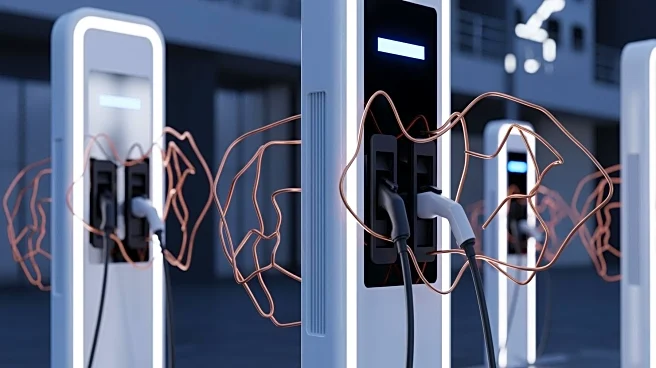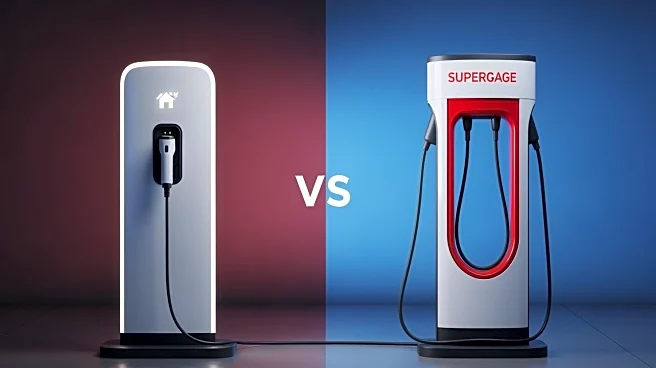What's Happening?
Copper wire thefts have become a significant issue in Los Angeles and other cities, targeting electric vehicle (EV) charging stations. Thieves are stripping copper wires from these stations, causing downtime
and costly repairs. The high voltage of charging units makes the theft dangerous, yet the economic incentive remains due to the value of copper. Companies and governments are exploring solutions, such as thicker cables and wireless charging pads, although these options present challenges. California has enacted stricter laws to curb metal recycling fraud, requiring sellers to provide identification and proof of legal acquisition of metals. Despite these efforts, the thefts continue to impact EV adoption negatively.
Why It's Important?
The increase in copper wire thefts poses a threat to the growth of the EV market by reducing the availability of functional charging stations. This could slow the transition to electric vehicles, which is crucial for reducing carbon emissions and achieving environmental goals. The economic impact includes repair costs for damaged stations, which can range from hundreds to thousands of dollars. The thefts also highlight vulnerabilities in infrastructure that need addressing to support the widespread adoption of EVs. Stakeholders, including EV advocates and government agencies, must find effective solutions to ensure the reliability and expansion of charging networks.
What's Next?
California has implemented new laws to combat metal theft, but further measures may be necessary to protect EV infrastructure. Potential solutions include increased enforcement, technological innovations like ink-covered cables, and the development of wireless charging systems. Stakeholders may need to collaborate on strategies to enhance security and reduce theft incentives. The ongoing issue could prompt further legislative action and investment in infrastructure improvements to support the growing number of electric vehicles.
Beyond the Headlines
The thefts underscore broader challenges in transitioning to sustainable transportation, including the need for secure and resilient infrastructure. The situation raises ethical questions about resource allocation and the balance between technological advancement and societal readiness. Long-term, addressing these issues could lead to innovations in charging technology and infrastructure design, fostering a more robust and theft-resistant network.












